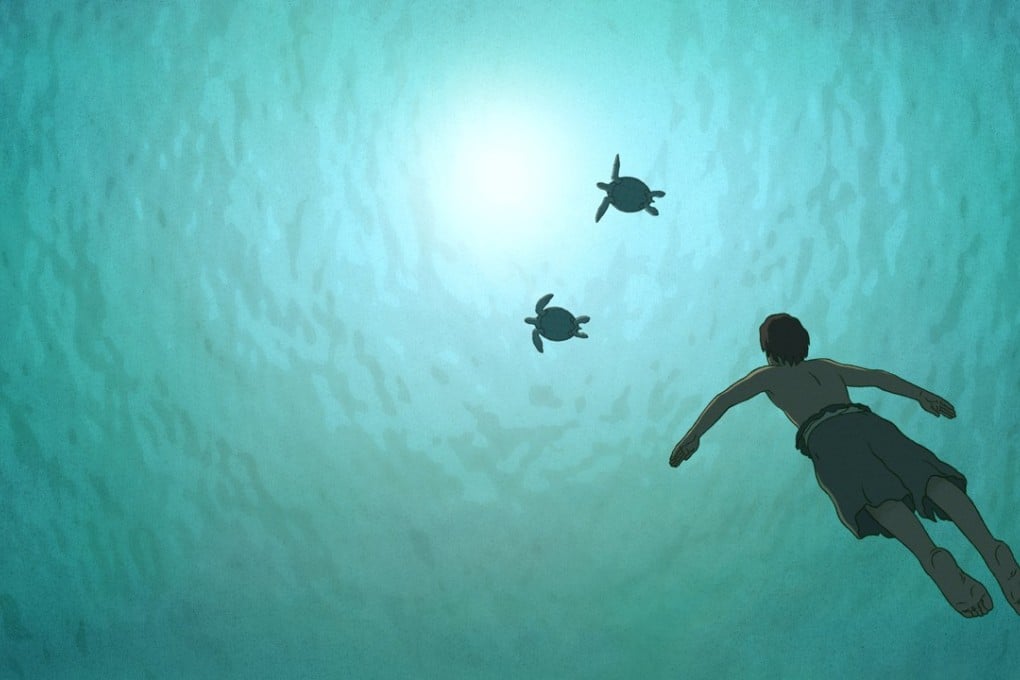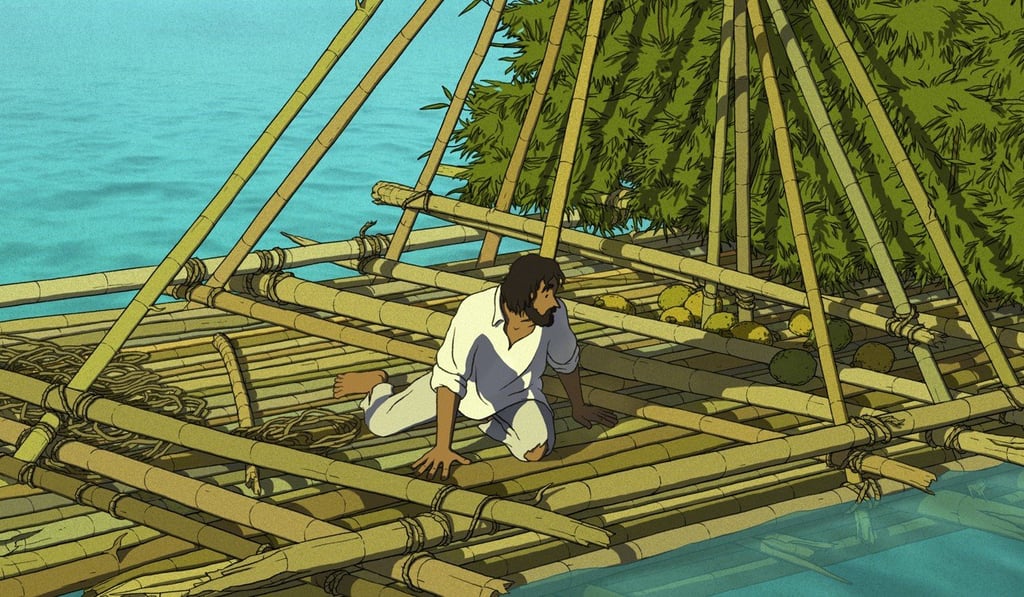Art house: The Red Turtle – wordless animated feature a sublime celebration of human life
With a style that draws on Japanese printmaker Hokusai and partly produced by Studio Ghibli, Michael Dudok de Wit’s thoughtful, mesmerising film addresses the big questions of existence.

Animated films are often lively affairs that try to overwhelm their audiences with song, dance and action-packed displays. But The Red Turtle (2017), a full-length animation by Dutch director Michaël Dudok de Wit, takes the opposite approach: it is serene, thoughtful, humble and moving.
The story begins with a man marooned on a desert island inhabited only by birds and crustaceans. His immediate instinct is to escape the island, but each time he builds a bamboo raft, it’s smashed to bits by a giant red turtle. In a rage, the man flips the turtle on its back and kills it. That’s when things take a mystical turn, even though the film maintains a naturalistic approach throughout.
The man acquires a family who experience joy, grief, disaster and love as they pass from youth to old age. It’s a celebration of life which shows that sad moments are as much a part of the human experience as happy times.
Aside from a few “heys!”, The Red Turtle contains no dialogue, and the emotions of the characters are expressed through body language alone. Dudok de Wit proves himself to be a careful observer of humankind, as all of his characters’ movements ring true, whether they be tender, fearful, elated or terrified.
